Is Ponta Delgada Worth Visiting? Your Dream Trip To The Azores

Why We Think You Should Visit Ponta Delgada
If you are travelling to the island of São Miguel, you will likely arrive in the city of Ponta Delgada. This is not just a standard airport city. In recent years it has grown significantly and now has many interesting places to see.
This blog post provides a comprehensive list of all the things to see and do here based on our week-long stay in the city. Let us show you why it is worth some time.
Highlights of Ponta Delgada
✅ The stunning churches with basalt facades and elaborate baroque interiors.
✅ The harbour and seaside location where you can swim in pools set in the ocean and board whale watching tours all year round.
✅ Pretty streets with patterned stone walkways, flowers, monuments and street art.
✅ Numerous expansive botanical gardens with species from around the world.
✅ The gracious people of the island who are happy to welcome you.
CHECK OUT OUR TOP TRAVEL RESOURCES
✦ Find superior accommodations on Expedia.com or Booking.com
✦ Book your rental car wth Discover Cars
Praca Gonçalo Velho Cabral
The city’s main square is where you will see the statue of Goncalo Velho Cabral, a navigator from the 15th century who first found and then settled on São Miguel. The statue was erected in the 1950s.

Behind the statue are the city gates or portas da cidade. These were the original gates dating back to 1783 and were the gateway to the city. They were originally located at the pier on the edge of the sea but were moved to accommodate the promenade that was developed in the 1950s.

The arches are very impressive built with white marble and black basalt. Both the royal and city coat of arms are carved into the gates. This is perhaps one of the most notable symbols in the city.
Here you will also be able to admire the gorgeous black and white tile patterns on the ground that are prominent all over the city. As far as city squares go – we think this one is quite beautiful.
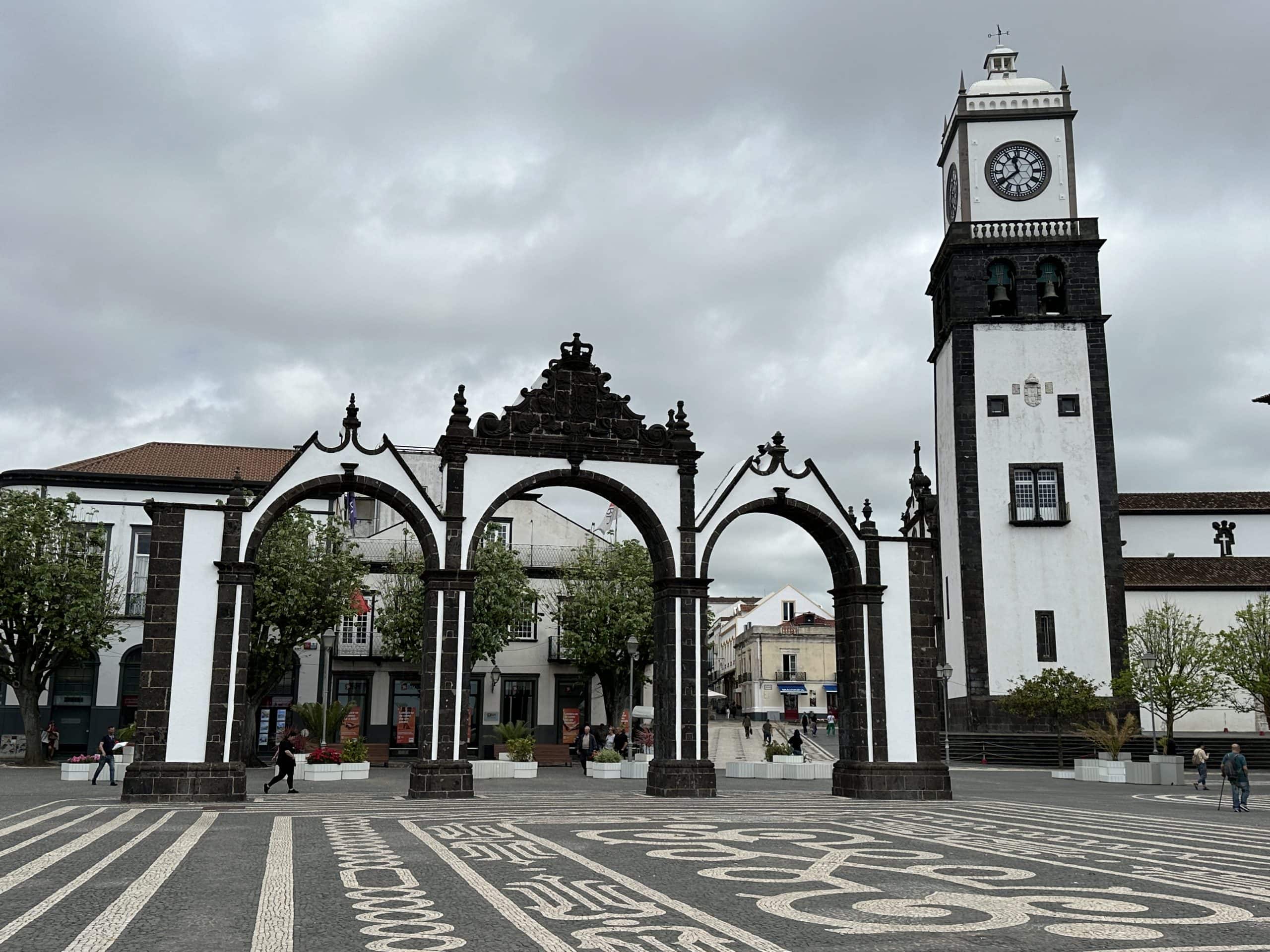
✅ We find the best way to explore a city is on a walking tour. To cover many of the locations noted with further explanation from a local guide, check out this popular walking tour in Ponta Delgada.
São Sebastião Church
Located in one of the nicest squares in the city – Largo da Matriz – is the oldest church in the city Igreja Matriz de São Sebastião. It was originally built in the 15th century in the Gothic style.

Over the years it has been remodelled and you will now see styles of Manueline and Baroque. This is the church that you will often see in pictures of Ponta Delgada due to its proximity to the main square.
Inside it initially seems rather simple with large peach coloured columns.


However when you take a further look at the chapels, you will see they are very ornately decorated and filled with sacred art. Some with golden tapestries and others with very intricate wood carvings. They are quite impressive to see.


Fun Fact:
It is the only church in the city that has gargoyles on the roof. See if you can find them.
Praca do Municipip
In the Municipal Square, you will find a pretty fountain surrounded by flowers and a statue of the archangel Michael.
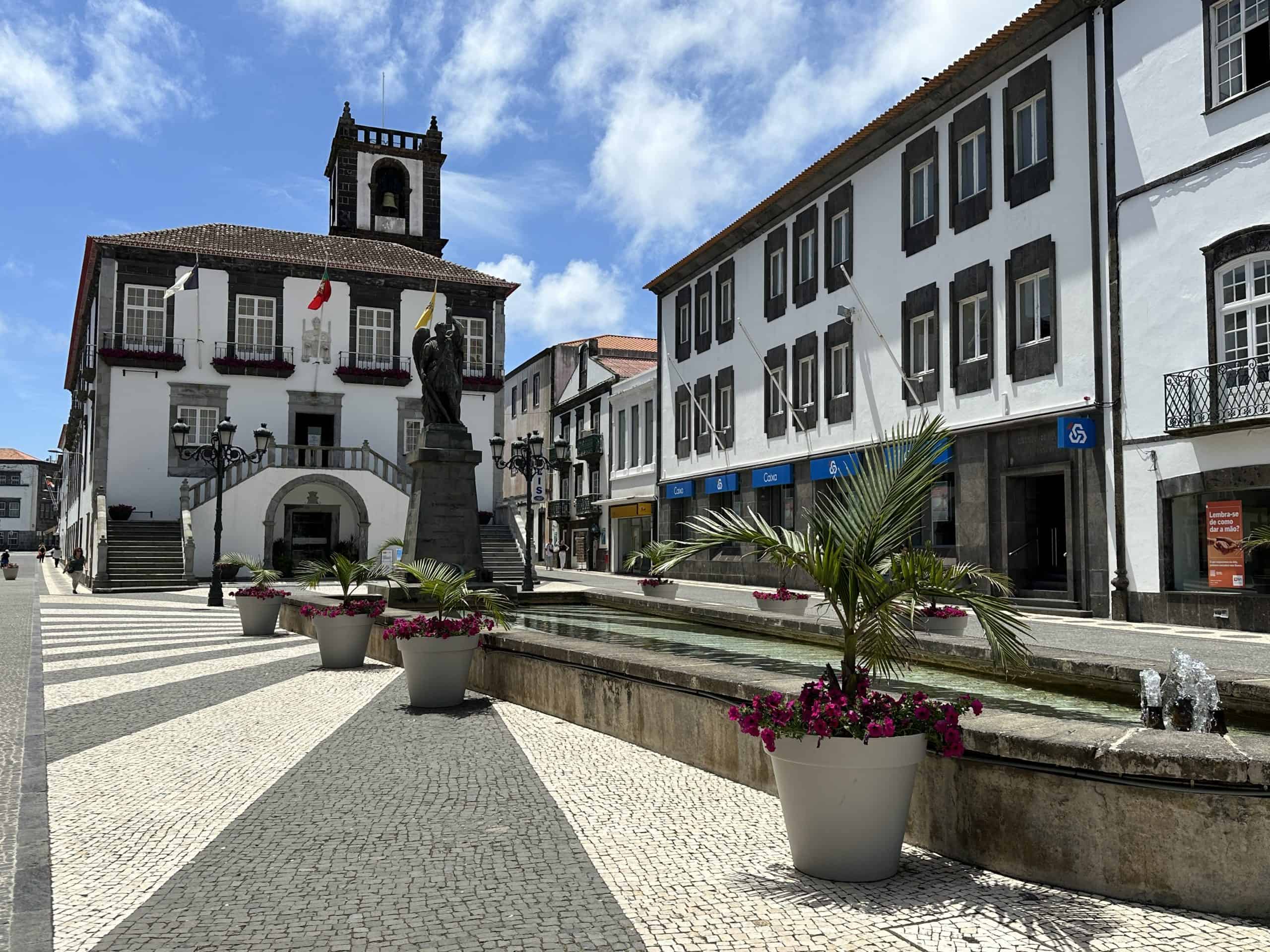
In the centre is the City Hall – this was the first residence of the first governor of the Azores. At the top is the same original bell that came from Portugal 480 years ago.

There is a tower that you can climb. The entrance is around the right-hand side of the building and there is no charge to visit. We were surprised as normally there is a fee like when we visited the Donjon Tower in Narbonne or the Mosta Rotunda in Malta.
The first part of the steps are fine but as you approach the final section it becomes very narrow – probably the tightest spiral staircase we have been on. But if you can persevere a little, the views over the city are fantastic.
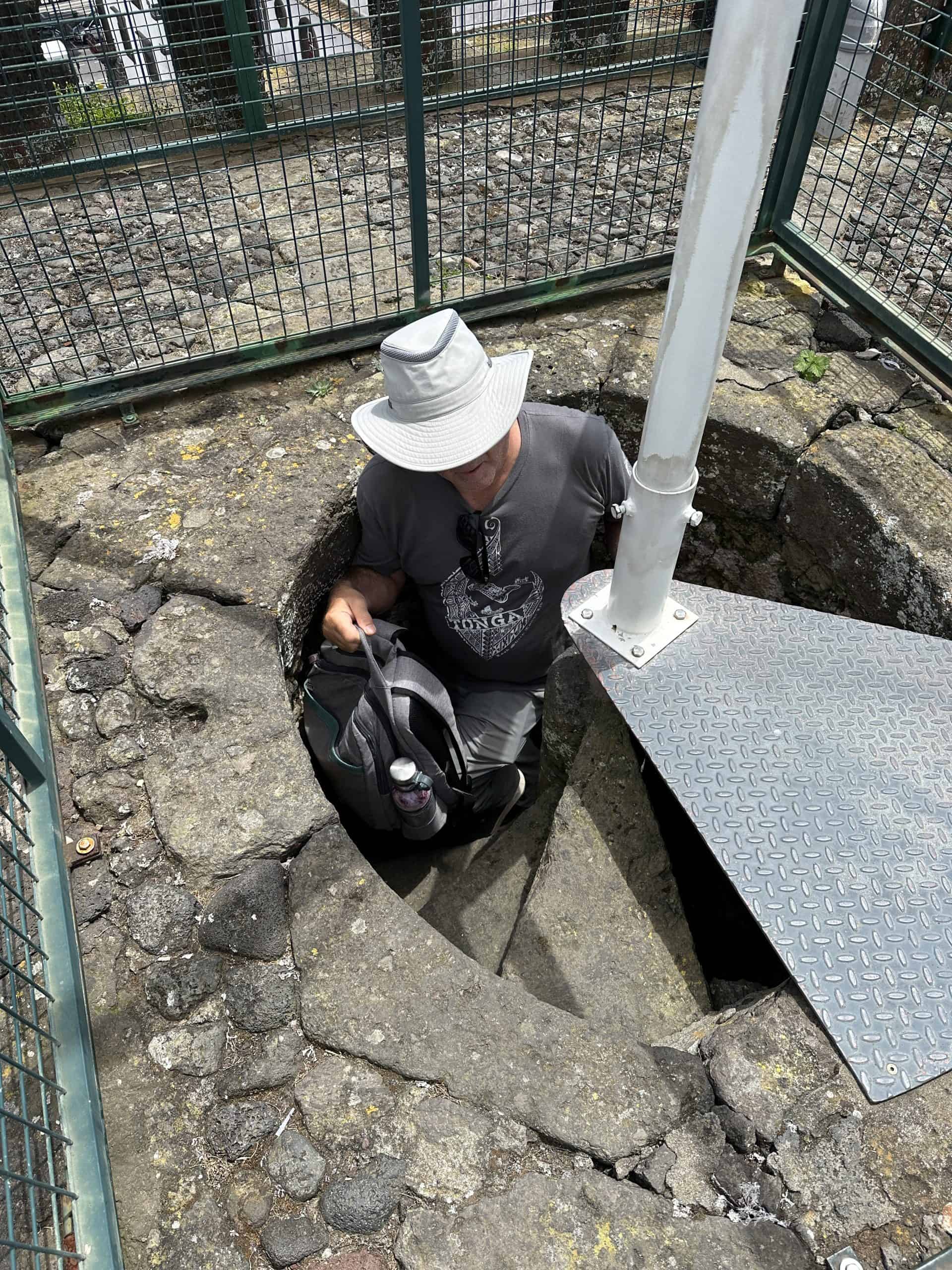
This was a great spot to see a full overview of the city below.
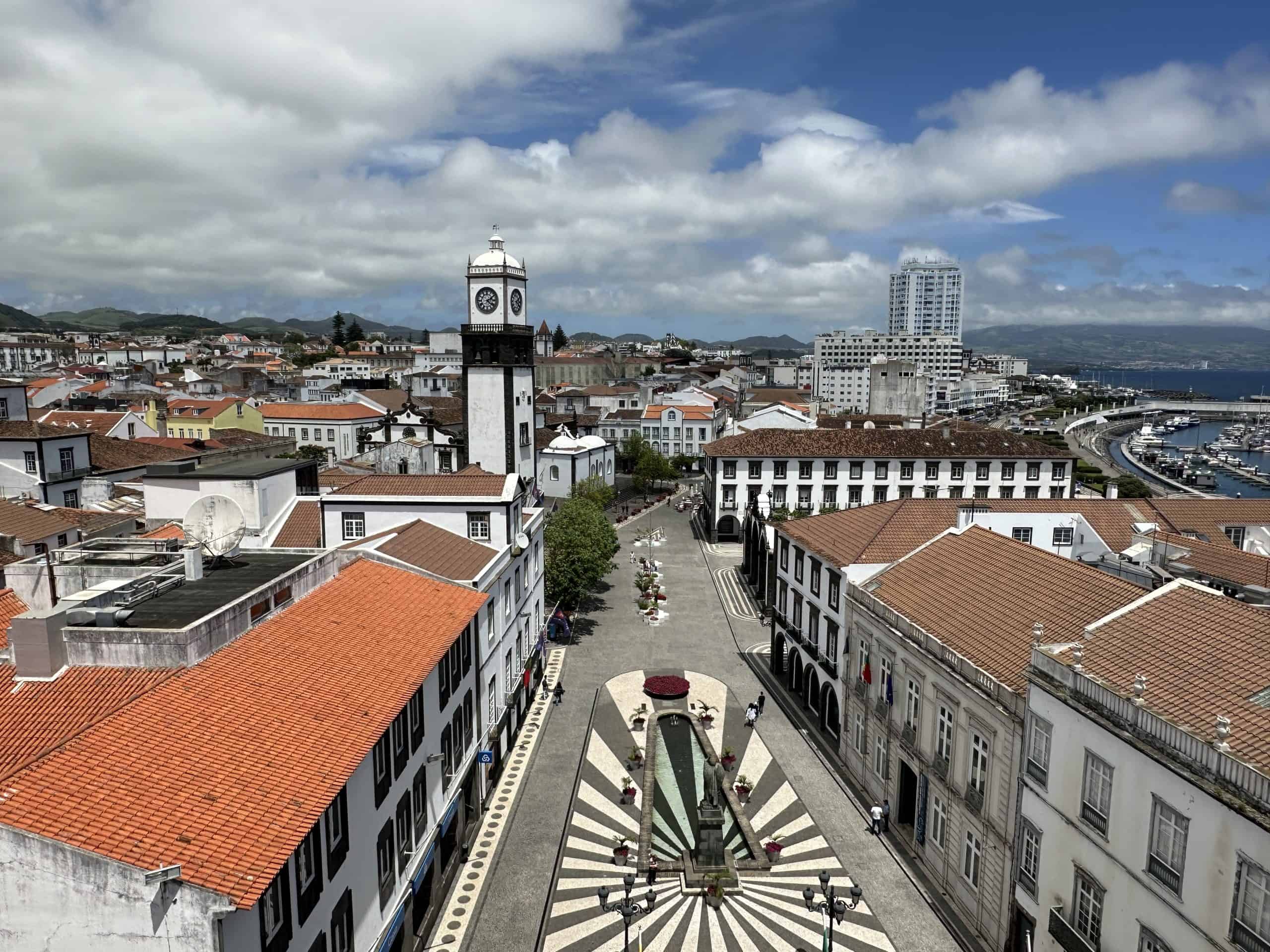
Don’t Have Time To Read This Now? Pin It For Later:
Santo Cristo Church-Church of the Holy Christ of Miracles
This church seems to go by several different names but it seems most locals call it Santo Cristo. The proper name is Santuario do Senhor Santo Cristo dos Milagres – just in case you are looking it up.
This location was originally a convent dating to the 1540s and it went on to have several chapels added starting in the late 1600s.

This is a very significant location in Ponta Delgada. As told to us by our local guide, 500 years ago the Pope gave a statue of Jesus Christ to the nuns of the convent as the religious belief seemed to be waning. The statue is 600 years old and is considered to be priceless.
It is covered in gold and the rubies, diamonds and emeralds that cover it are all real – this may be why it is located in a shrine behind heavy iron bars. This piece made the convent one of the richest in the world.

Nowadays this is a very significant icon and is the centre of the biggest, annual festival on the island. Each year 5 weeks after Easter, there is an extensive procession that takes place for 7 hours through the streets of Ponta Delgada.
Eight men carry the statue on rotation since the weight is over 400 kg. The entire city comes out to watch and over 200,000 visitors come to the island to participate in the festival that takes place for a week.
There are many activities happening during this time, including devout followers who walk on their knees around the square in front of the church. We were also told that the church is decorated with lights making it even more beautiful. This would be an interesting religious festival to witness if you were in the area during this time.
Inside the church, there is the dedicated shrine where the statue is located but there are also other lovely elements to see.
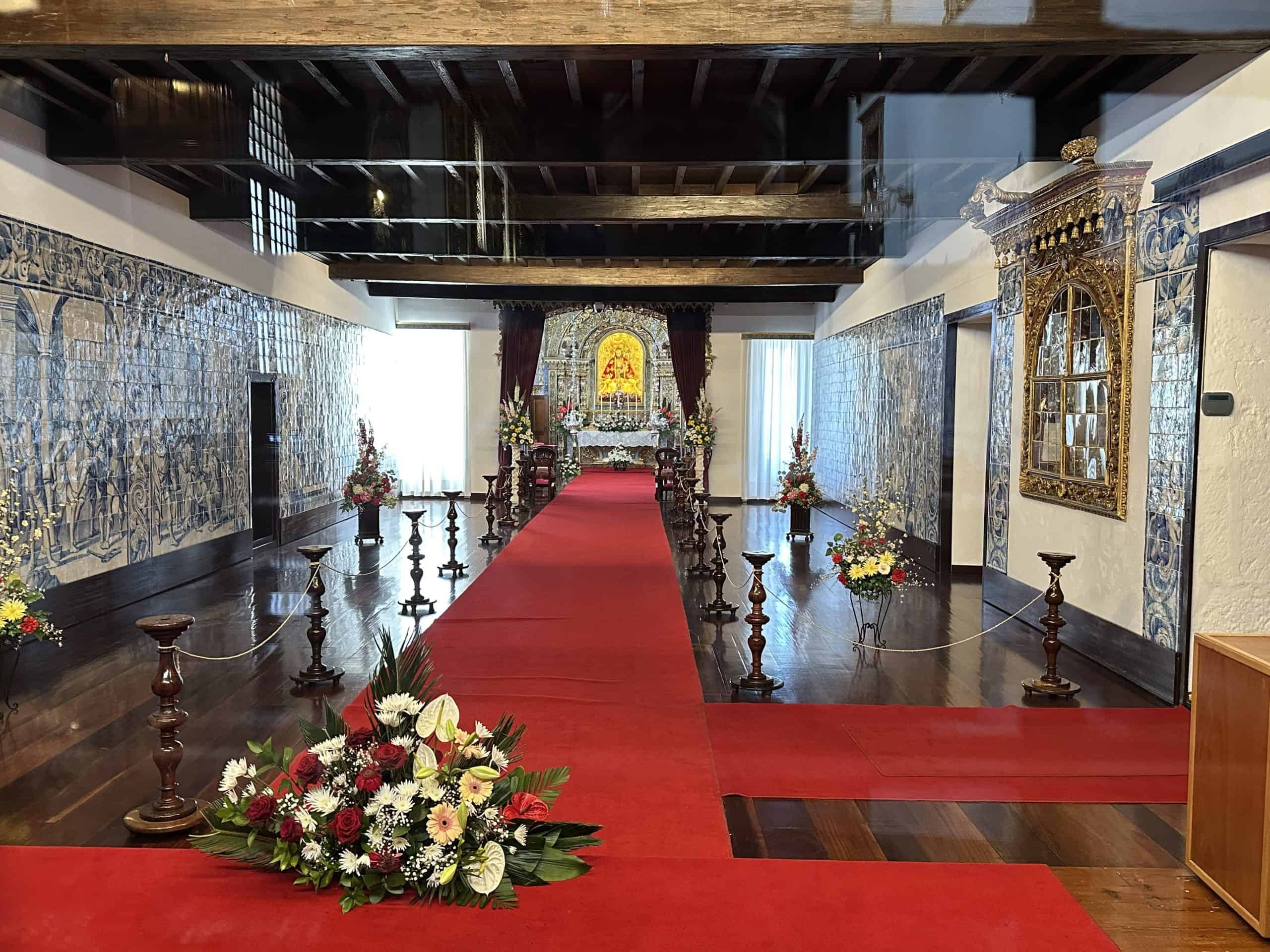

On the walls are beautifully painted tiles telling the story of when the icon was given to the sisters.
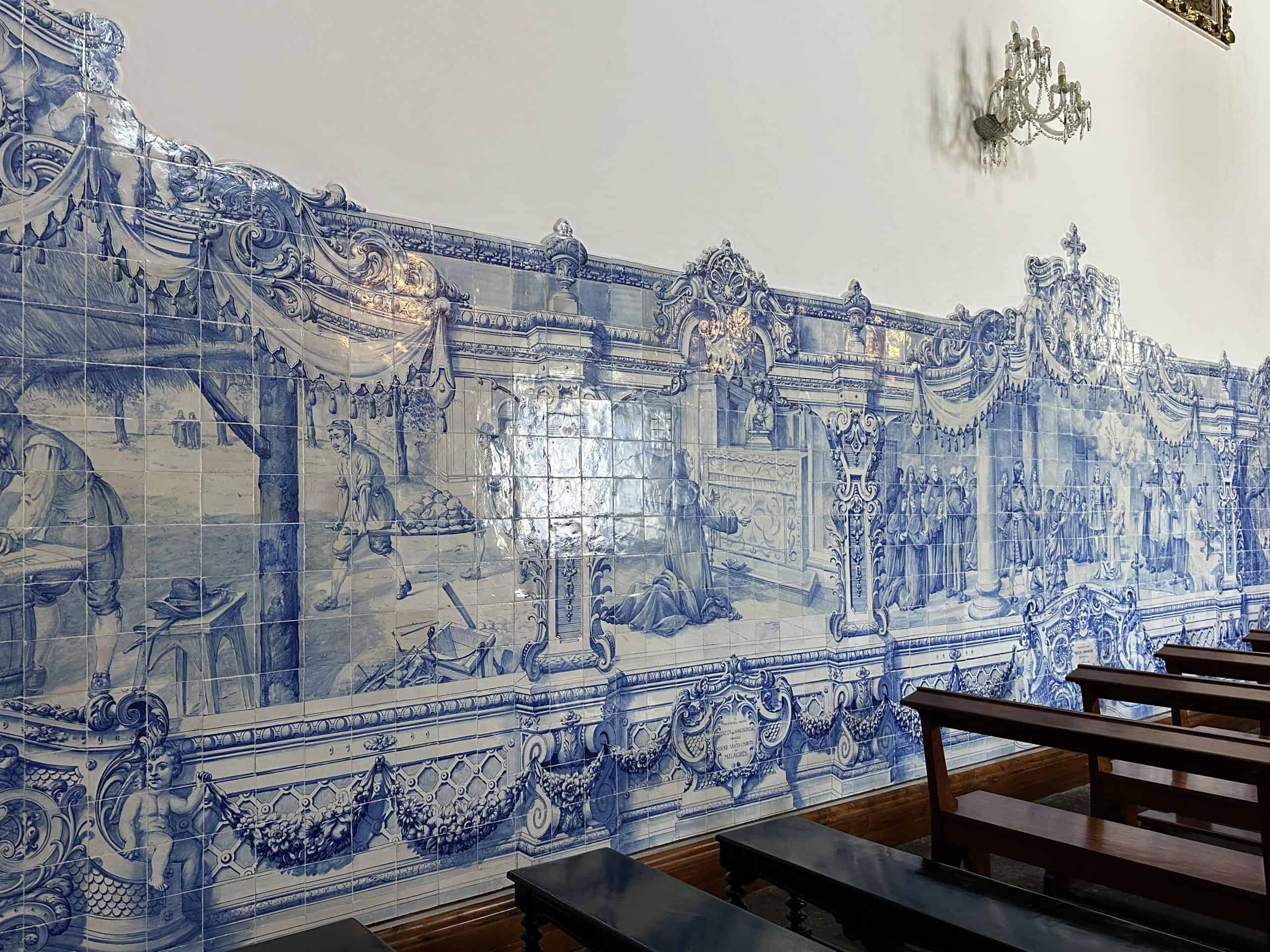
The altar is fashioned in the Baroque style and is also very elaborate.

We saw many people coming in to spend time in the church and you could tell this is a very special place to the people who live here.
Forte de São Brás
Due to the position of the Azores islands in the Atlantic Ocean, it was regularly defending itself against pirate attacks. As a result, a fort was constructed in 1560.

It was renovated and updated in the 19th century making it more expansive and it is still a military base in use today.
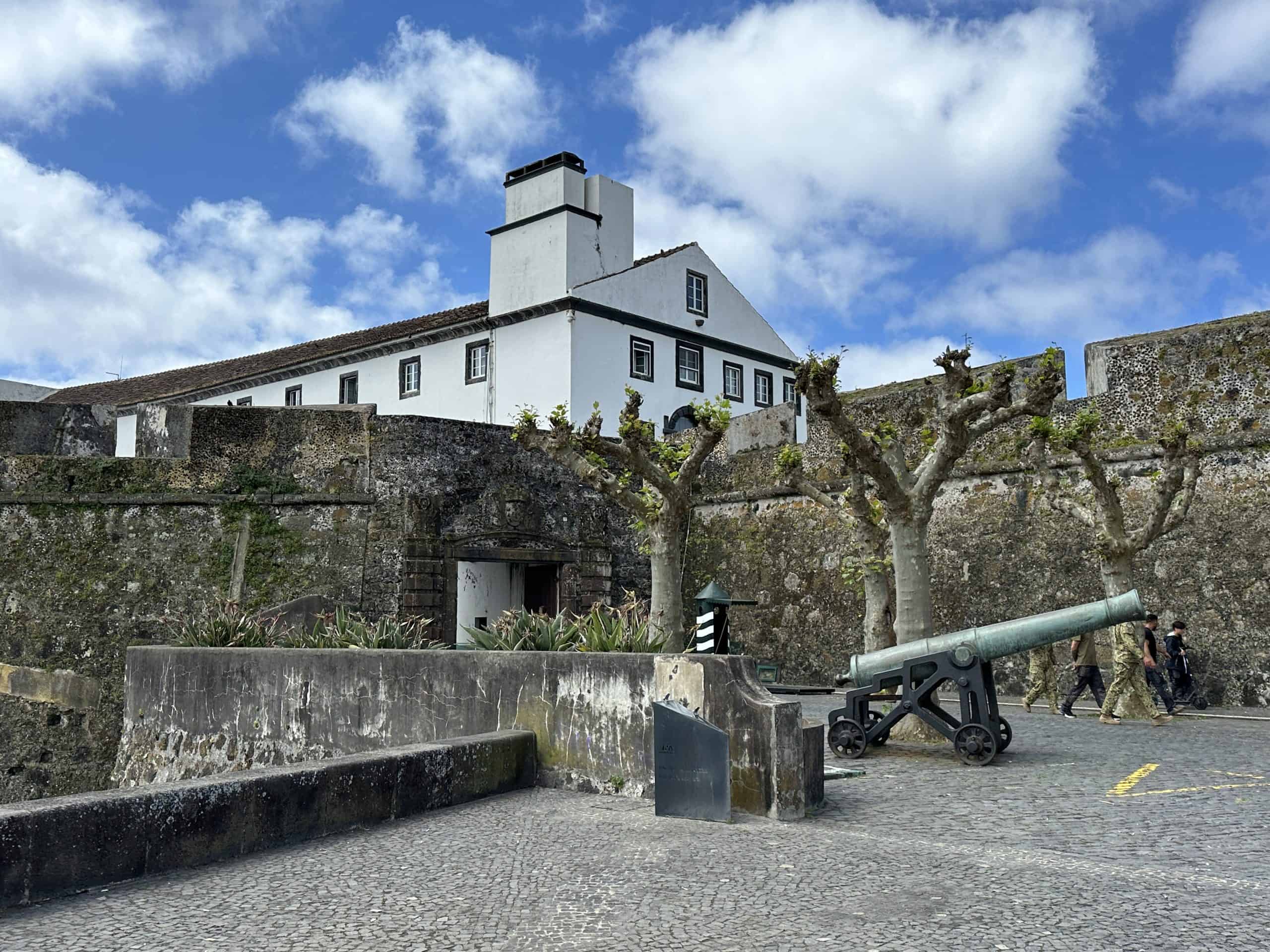

Walking around the outside ramparts gives you a nice view of the surrounding area and there are some old guns still on display.

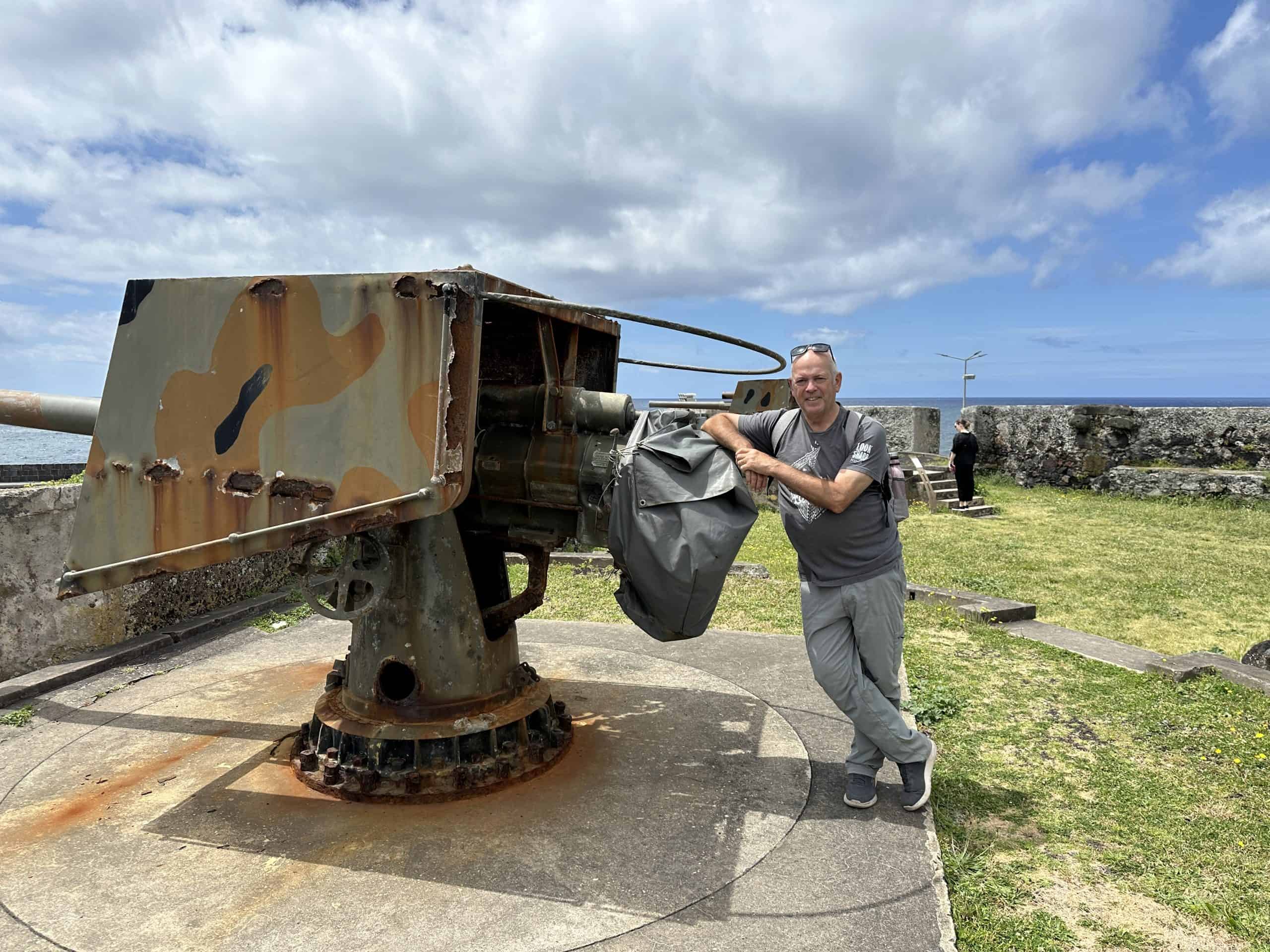
At the entrance is an exhibition that details the importance of the Azores and its location related to transatlantic air travel since it served as a stopping point for fuel. It was very interesting to read about its importance in the early 1900s as air travel was advancing. During WW2 the airfield was used extensively for transporting troops and materials.
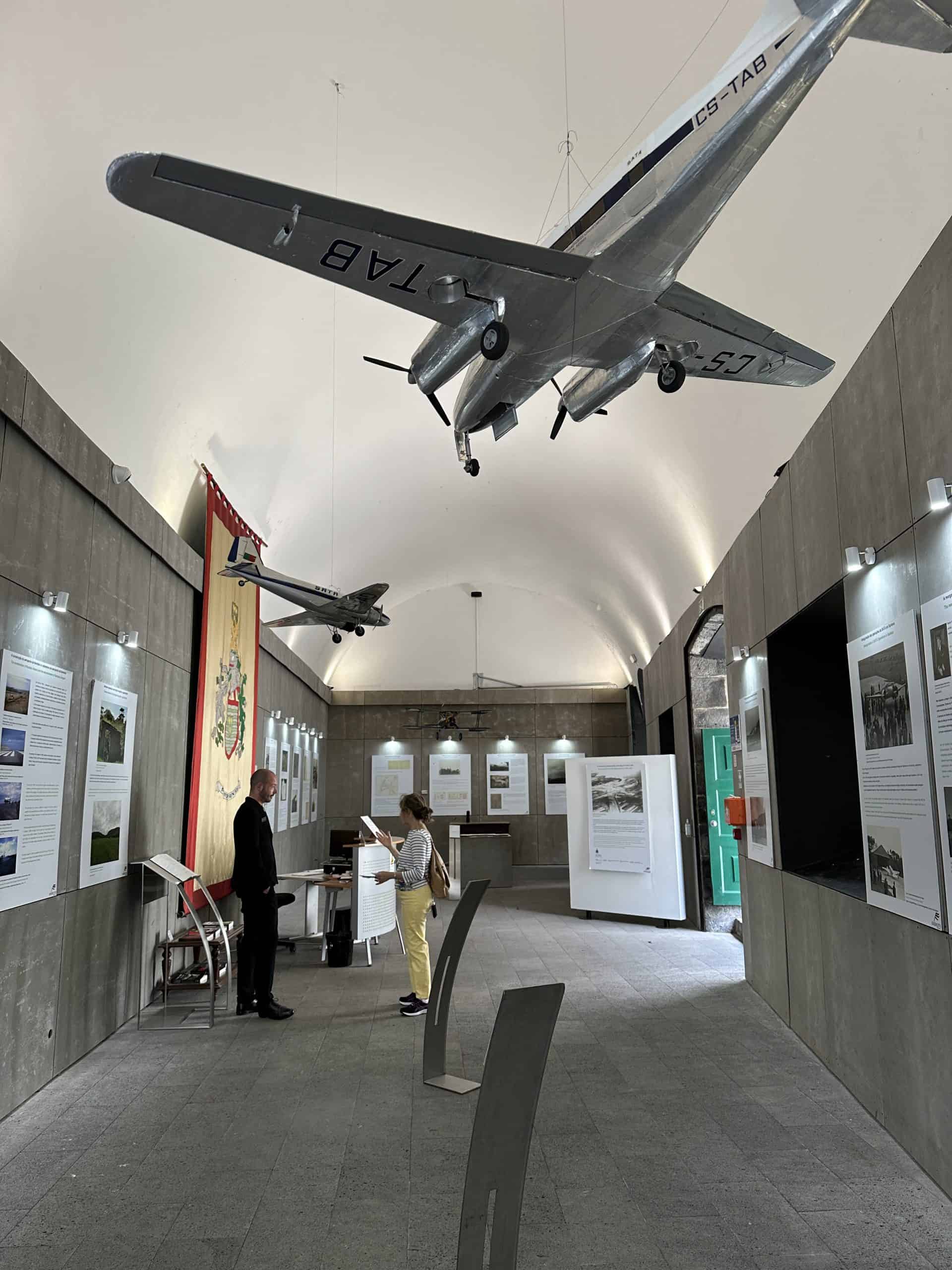
Inside is a large military museum. It covers many different topics including several displays about the Portuguese Colonial war that was fought in Angola, Mozambique and Guinea during the 60s and early 70s.
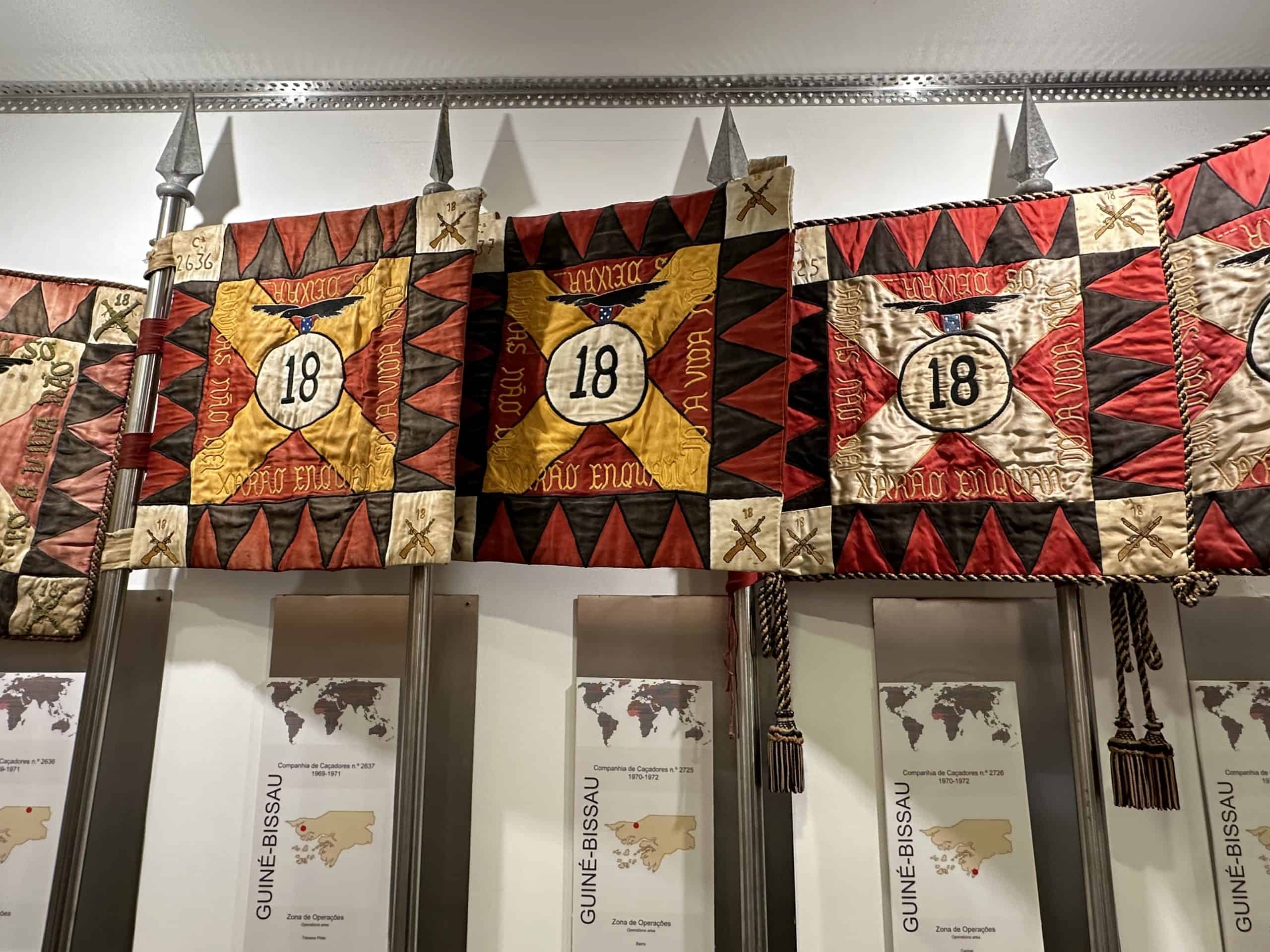
We were unaware of this war that took place and were moved when looking at the pictures of the veterans and gaining an understanding of the struggle that took place during that time.

While the Azores were located in a strategic location at the start of WW2 they chose to remain neutral but eventually, its position became more of a “collaborative neutrality” as they started to assist the allies.
There are many rooms in the museum with loads of military tools, equipment, uniforms, documents and weapons.
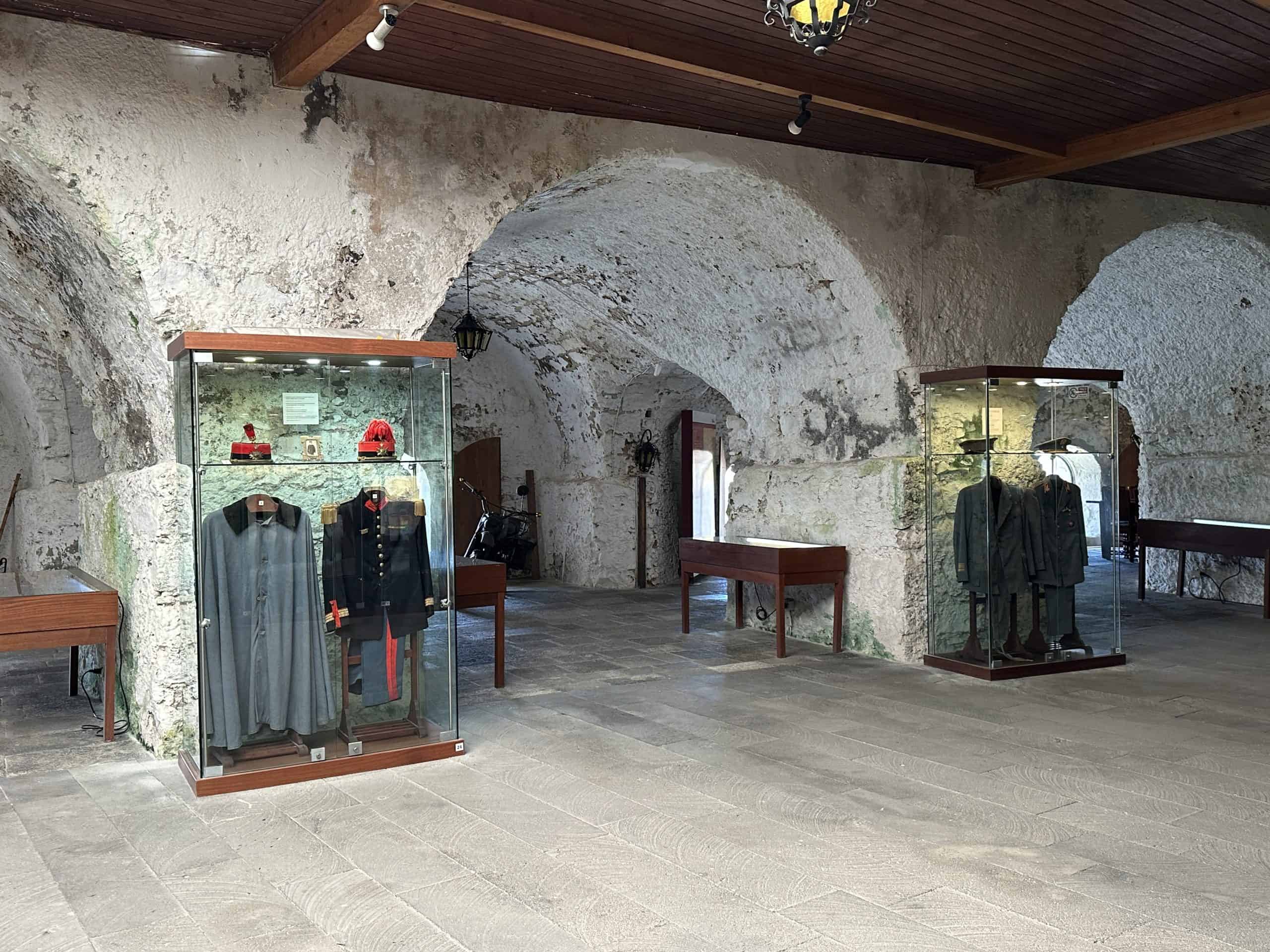
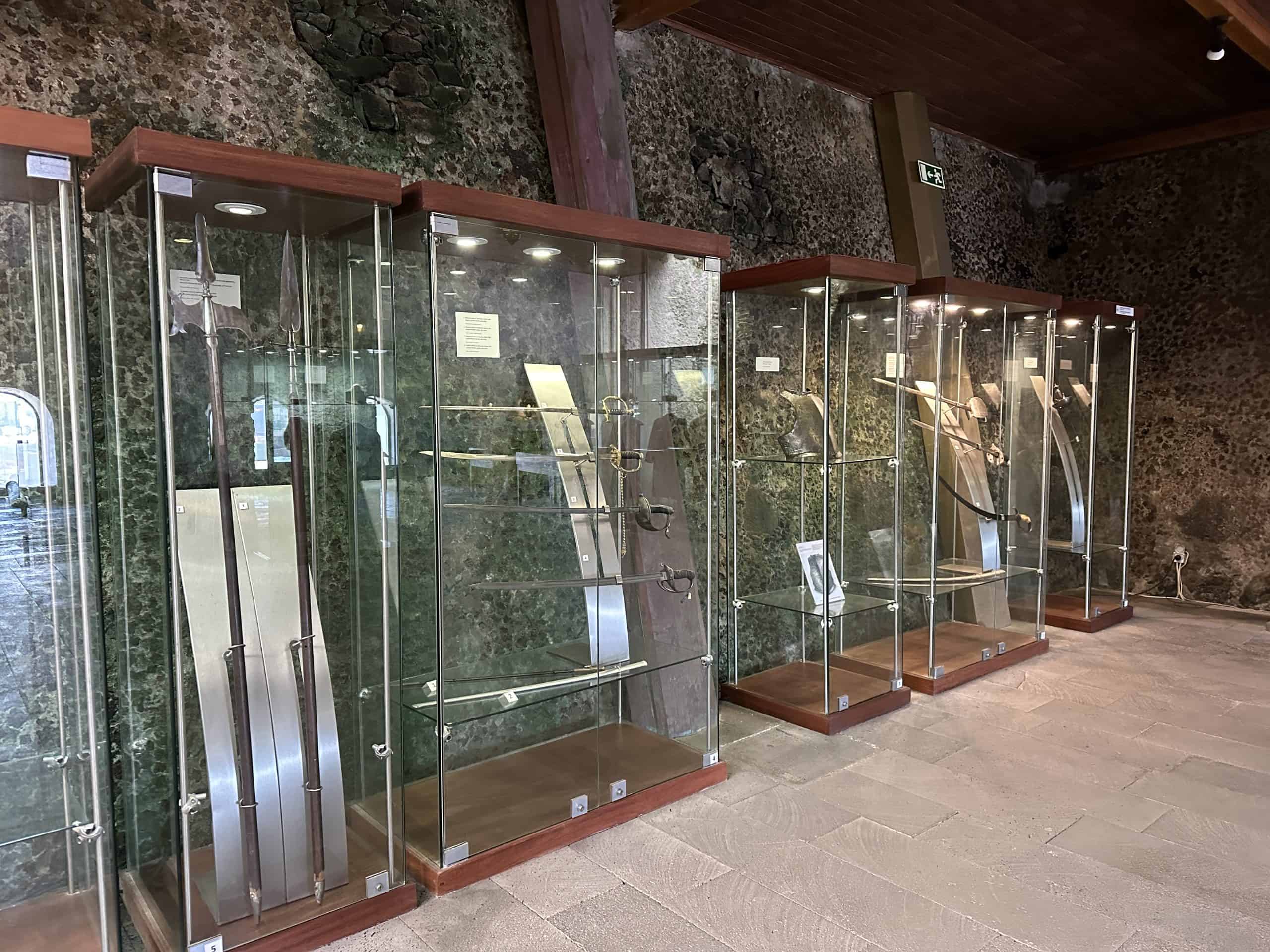
While some of the weapons are in glass cases similar to the armoury we visited in Valletta, other pieces of memorabilia were just left in open spaces with much of it left to the open air sea and moss covering the walls.
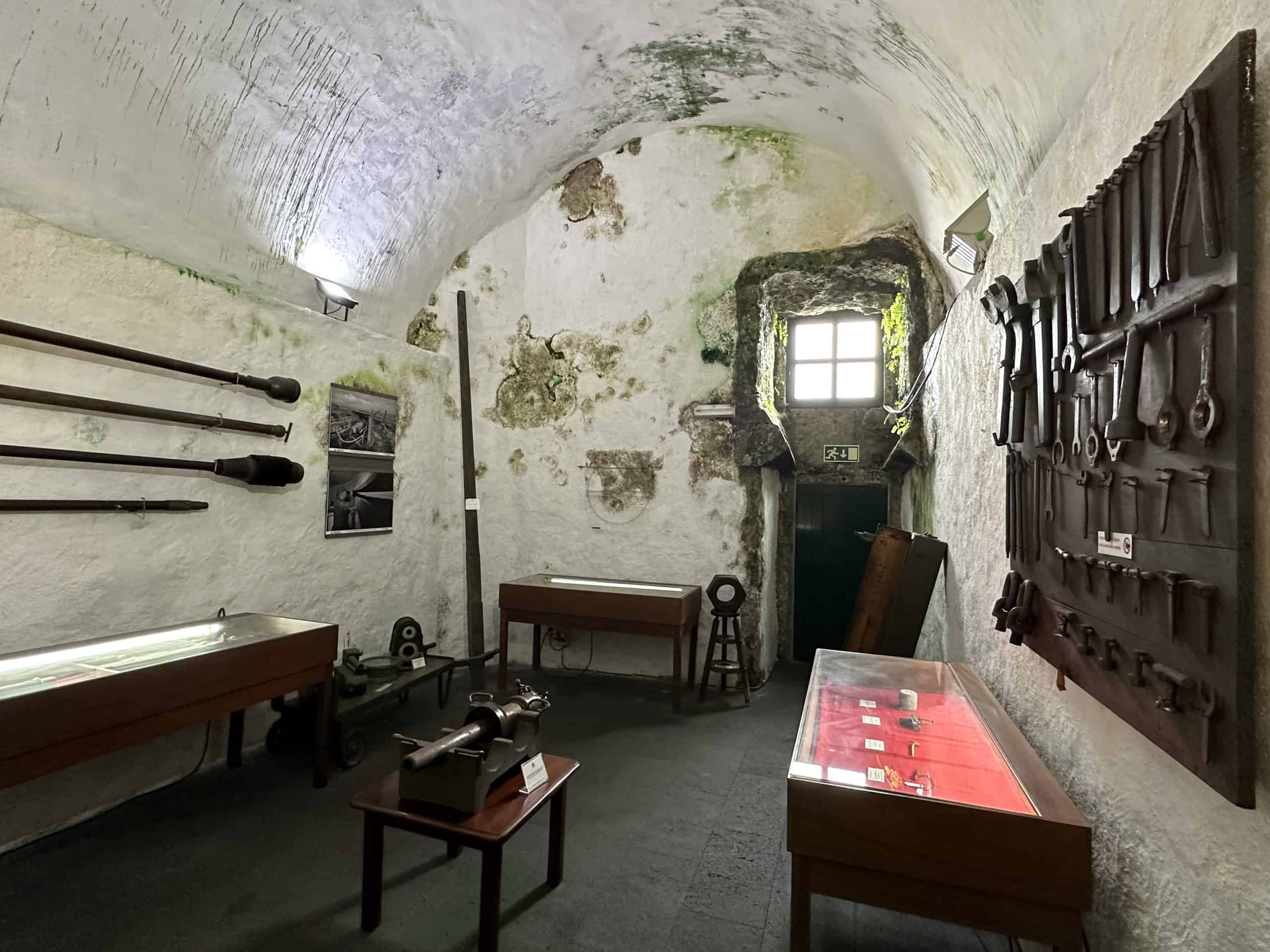
We found this very surprising considering many military museums we have visited in the past such as the military Museum in Edinburgh or in Valletta have preserved much of this important material.

We found the fort to be an interesting place to visit and it provided some good historical background.
Avenida Infante Dom Henrique (Promenade)
There is a long stretch of path that covers a considerable distance along the water’s edge known as the Avenida. This is a great place for walking and taking in the view of the sea. You can walk all the way to Ilhéu de Rosto de Cão also known as the Rock of the Dog.
If you look at the end of the rock it looks like the profile of a face. Legend says this face is the first settler who came to São Miguel island.
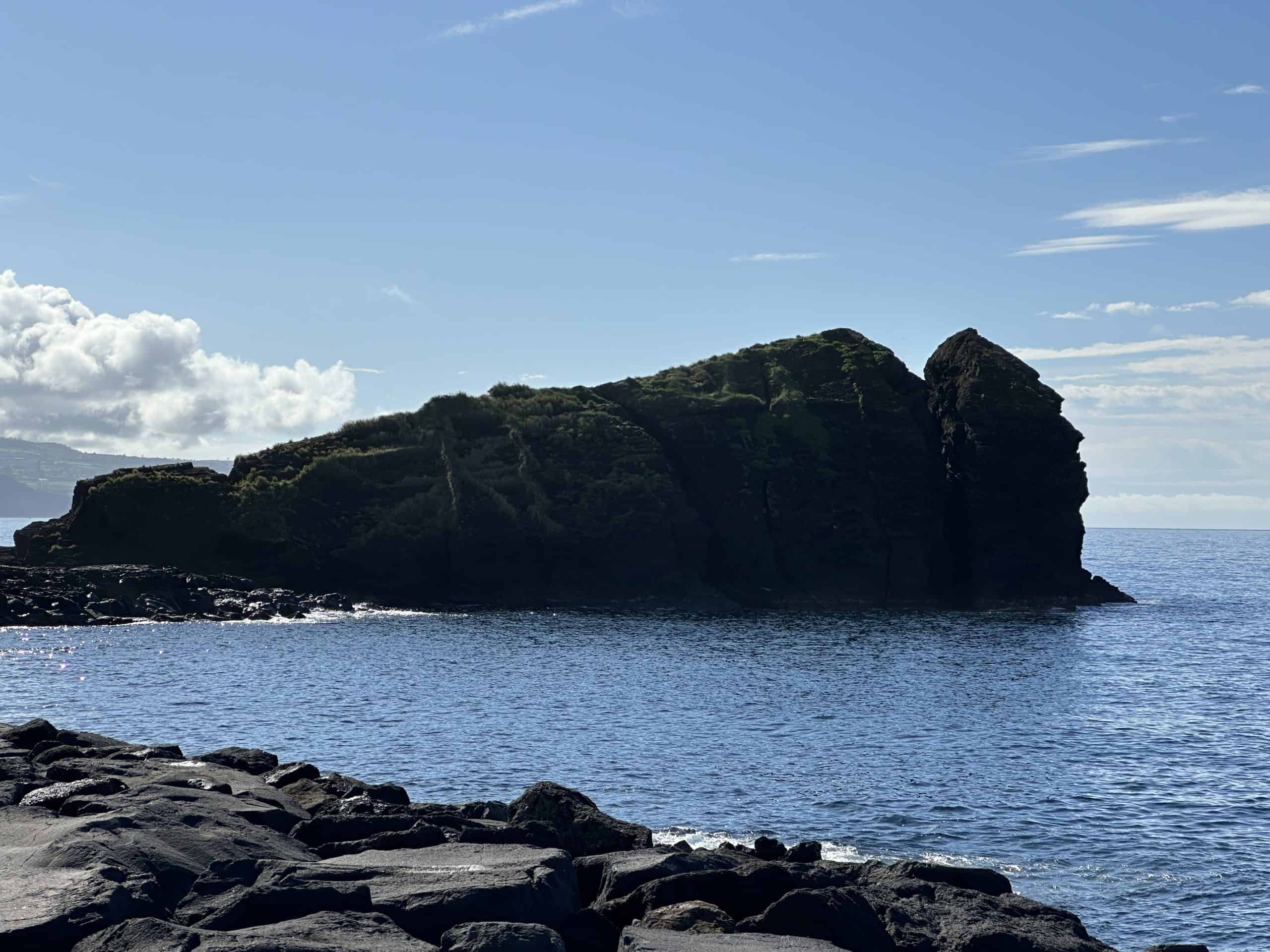
In the section in the middle of town, you can see a large yacht harbour. There are restaurants along this part that are perfect for having a meal or just relaxing with a drink.

From the harbour area, it is possible to board a whale watching tour. There are several sizes of boats depending on your preference including catamarans and zodiacs.

Sperm whales stay in this area all year round and many other types can be seen passing through the area during their migration seasons. It is also likely to see a number of dolphins in these waters.
✅ If you are interested in seeing whales and dolphins, clients rave about the half day experience with this company.
Also located along the promenade are some public pools that sit within the sea. This is a very popular attraction for locals and visitors to swim and sunbathe on the warmer days.
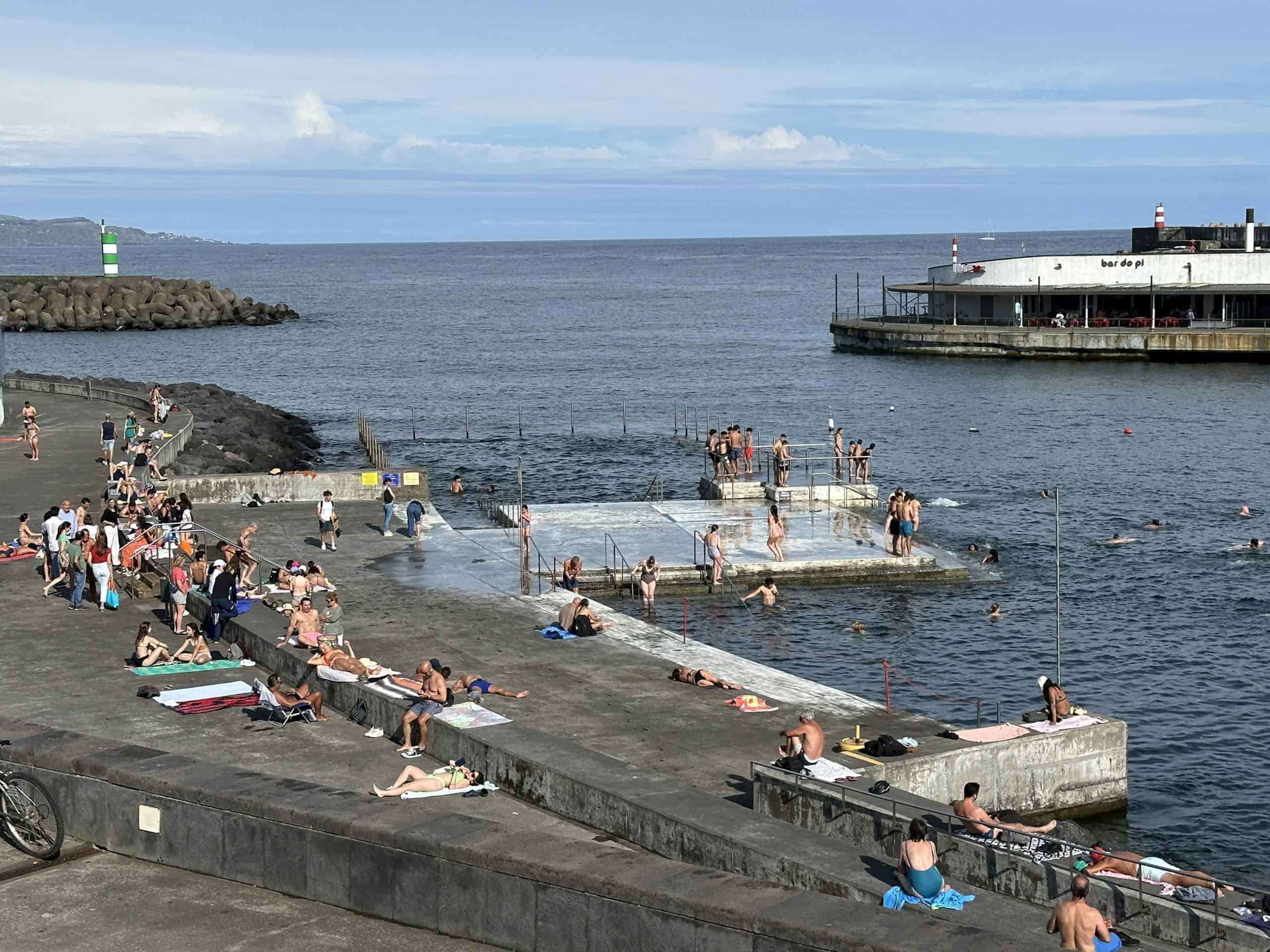
San Pedro Church
Built on the ruins of a temple dating to the 1500s the church was built in the 18th century.

While this is perhaps one of the simpler churches in the city, it is still worth a visit to see the beautifully painted ceiling and very ornate altar.

It has very elaborately decorated chapels on each side of the single nave. We found this location to have a much lighter and more airy appearance.

Be sure to drop in for a quick visit as it also provides a nice view out to the harbour.
Carlos Machado Museum
It is hard to miss the beautiful building that houses the Jesuit College Church. It is a stunning building from the outside.

Inside you can view a collection of Portuguese paintings and sculptures from the 16th century, all considered to be significant pieces of sacred religious art.

But the highlight of this location is the incredible altar. It was started in the 1600s and has elaborate carvings made from Brazilian jacaranda wood. It was never finished since the King of Portugal insisted that all the religious orders leave the country.

It is fascinating to see the intricate details of the altarpiece in its natural form without any gilding placed on top. We immediately thought of the incredible Jesuit church we had seen in Quito and how this one could match it if it had been completed.
Fun Fact
There are 30 angels on the altar and if you look closely, one of them has blue eyes. See if you can find it.
You can also see gorgeous blue and white murals painted on tiles known as Azulejos located on the lower edges of the altar.
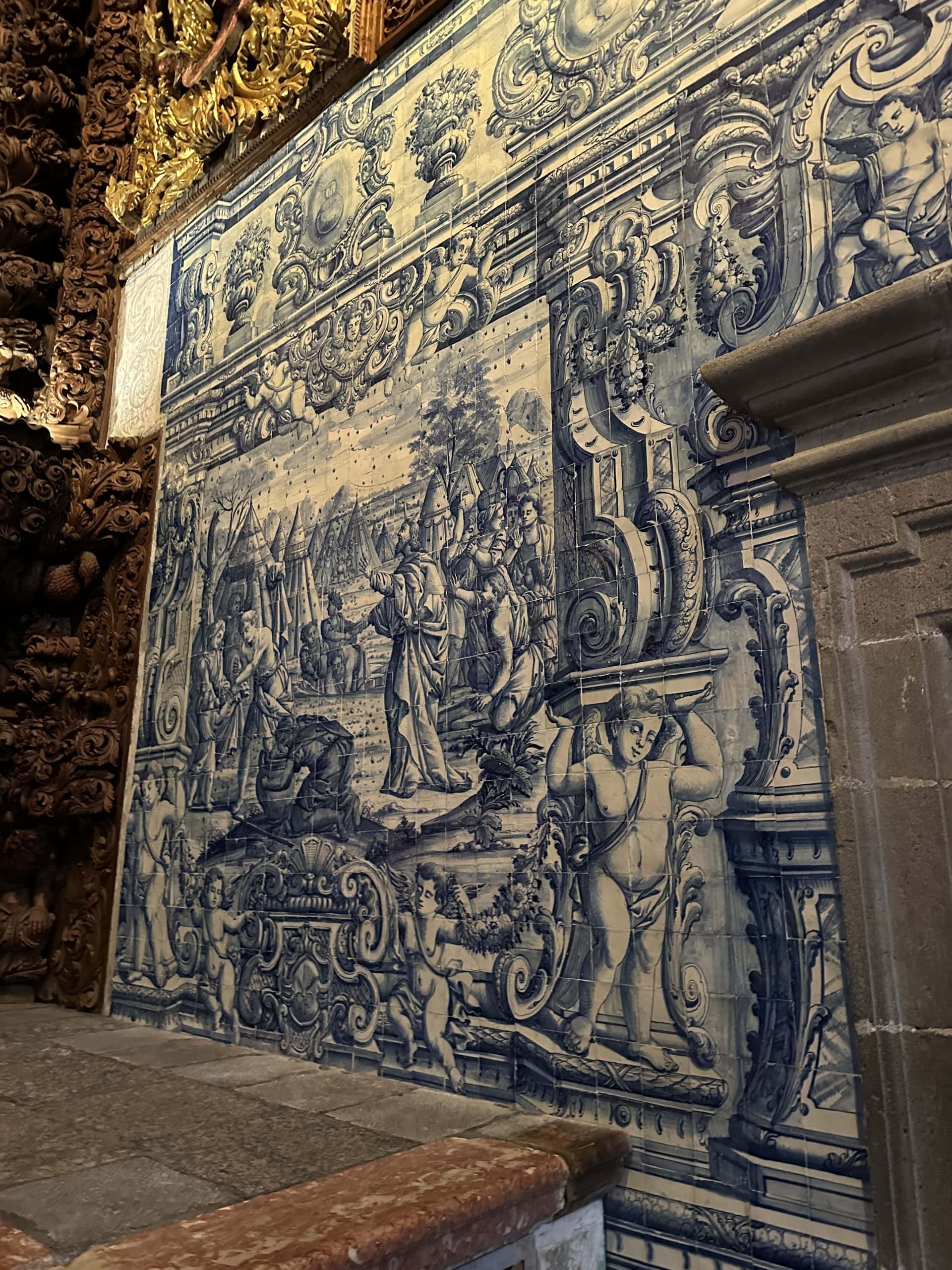
Additionally, they host rotating contemporary art displays in a separate hall. It is quite interesting to see these works of art in their modern style after viewing the interior of the church.

Botanical Gardens
São Miguel has many lovely gardens around the city. Even just walking along the streets you will see squares with flowers, planters and hanging flower boxes. But they also have some tremendous formal gardens that are very impressive.

Jardim Antonio Borges
Antonio Borges started this garden during the 1800s during the Orange Era when the region was becoming quite wealthy. He imported plants from many locations across the world and created an incredible garden.

It is evident when you walk through just how much thought and planning was put into the layout and design.


Here there are plants from Brazil to Australia all thriving together to make a fantastic place to walk and enjoy the outdoors. They have a massive Moreton Bay fig tree that is over 300 years old.

There are winding paths throughout, hidden grottos, ponds, bridges and some truly beautiful flora and fauna including black and white birds of paradise that are only found in macronesia islands. It is an incredible paradise to spend some time in.



This is now a public park and is free to enter. Be sure to visit!
Jardim Jose do Canto
This large garden located within the city is a stunning place to visit. It is named after Jose do Canto who created the garden in the 1800s by connecting with botanists from around the world. He bought or traded plants and set about creating the incredible space that is there now. It is thought that there are over 1000 species on the property.

We thought the trees were the most impressive here. Some reach high into the sky and are so majestic.

There are two massive Moreton Bay Fig Trees that have awesome roots protruding above the ground. They are spectacular to see!

And in the middle of the garden is an extensive bamboo forest and a pond with dozens of frogs.


There is a Palace in the centre of the property that is the residence for the family, along with a chapel from the 17th century and a restored greenhouse that is used for events.

This is a wonderful place to come and spend some time. It was very quiet when we visited and there are plenty of benches where you can sit and take in the surrounding beauty.
There is an entrance fee of five euros.
Mercado da Graça
When visiting the city of Ponta Delgada be sure to visit the city market.

The current covered market location has been undergoing renovation so all the vendors that sell fruits and vegetables have been moved to the underground parking lot underneath the market location.


Here you can find loads of fresh vegetables and fruits that are grown both on the island and also the mainland. We had some of the most amazing pineapple and also sweet cherries.

Located around the edges of the covered area there is a butcher and several fish mongers where you can find the freshest local fish and seafood – including limpets – the specialty of the area.


Be sure to visit the King of Cheese where they sell some awesome cheeses from the region including the Azorean São Jorge cheese. They have varieties made in Sao Miguel and also the surrounding islands.

The cheese is pasteurized and aged from 3 months to 3 years. It is a very well-balanced and flavourful cheese that is wonderful. Be sure to check it out while visiting.

If you have lodgings with a kitchen facility this would be a wonderful place to pick up some food for breakfast or snacks. Plan to go in the morning when the produce is freshest and note it isn’t open on Sundays.
✅ Another great way to experience the market and the specialties of the area is with a food walking tour. This 5 star tour explores the market, the King of Cheese and a great restaurant that we had dinner at. It is the perfect introduction to Azorean food.
Wander the Streets
Ponta Delgada is not a large city and we would recommend wandering the pretty streets. The architecture has a unique style of its own. Being a volcanic island you can see many of the buildings that were built with striking black basalt.

And make sure you look down! Most of the sidewalks are made with different black and white patterns. This was a custom that was brought by the Portuguese and dates to the 1400s. We noticed that many streets had different patterns and this was so people could distinguish streets since at that time they did not read.



They are painstakingly repeated for blocks and really make for an interesting architectural feature.
The city has several monuments that are significant such as the Immigrant Monument. This is dedicated to all the immigrants that went to Canada and the US. It is a family making their way and we were advised that the hand of the man at the front of the bronze statue, is at the same latitude of New York City.

When walking the streets you will also see murals and be sure to take note of the pretty heart images that were created by the Belgian artist Yves Decoster. Our local guide told us that his paintings, which you can see all around the island, were a symbol of the love he felt when he came to the Azores and was fully accepted into the community as a gay man.

They are lovely – some are small and others larger but they all have a heart incorporated in them somehow. It is a beautiful expression of this talented artist and one that the Azoreans in São Miguel treasure.


Tourist Train
Ponta Delgada has a cute little train that has numerous routes around the city. Similar to the Tourist Train in Collioure this can be a convenient way to visit the historical sites, the gardens, and the beaches.

They also offer specific tours that will take you on a guided tour but also include tastings or guided tours of the pineapple plantation. They range from 50 minutes to 2 hours depending on which one you choose. It is a great option for those with limited time or mobility issues.
Carvão Aqueduct
Located just on the edge of the city is a fantastic site that provides a backdrop for some great photos. Here you can see sections of the aqueduct that used to supply water to Ponta Delgada.

This is a fairly extensive system that has both single and double-storey levels across the countryside. The section we went to is covered in moss and is pretty cool to see.
Plantacao de Ananas dos Acores
Located 20 minutes walking from the city is a wonderful pineapple plantation that we really enjoyed visiting. This farm started 160 years ago and it was interesting to see how the city had grown up around it.
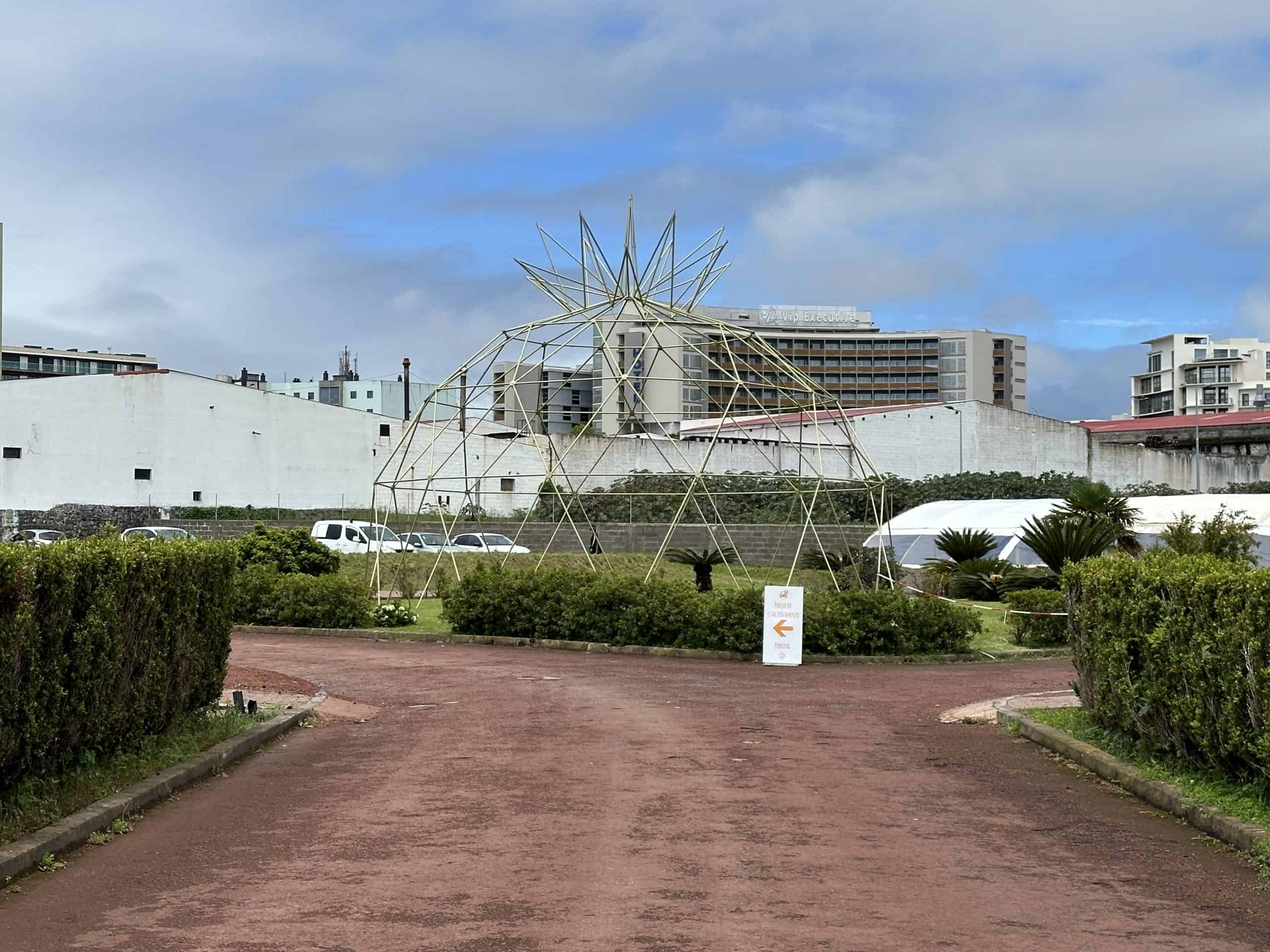
Pineapples were a crop that was introduced after the devastation of the orange growing industry. Due to the climate, the fruit is grown in greenhouses.
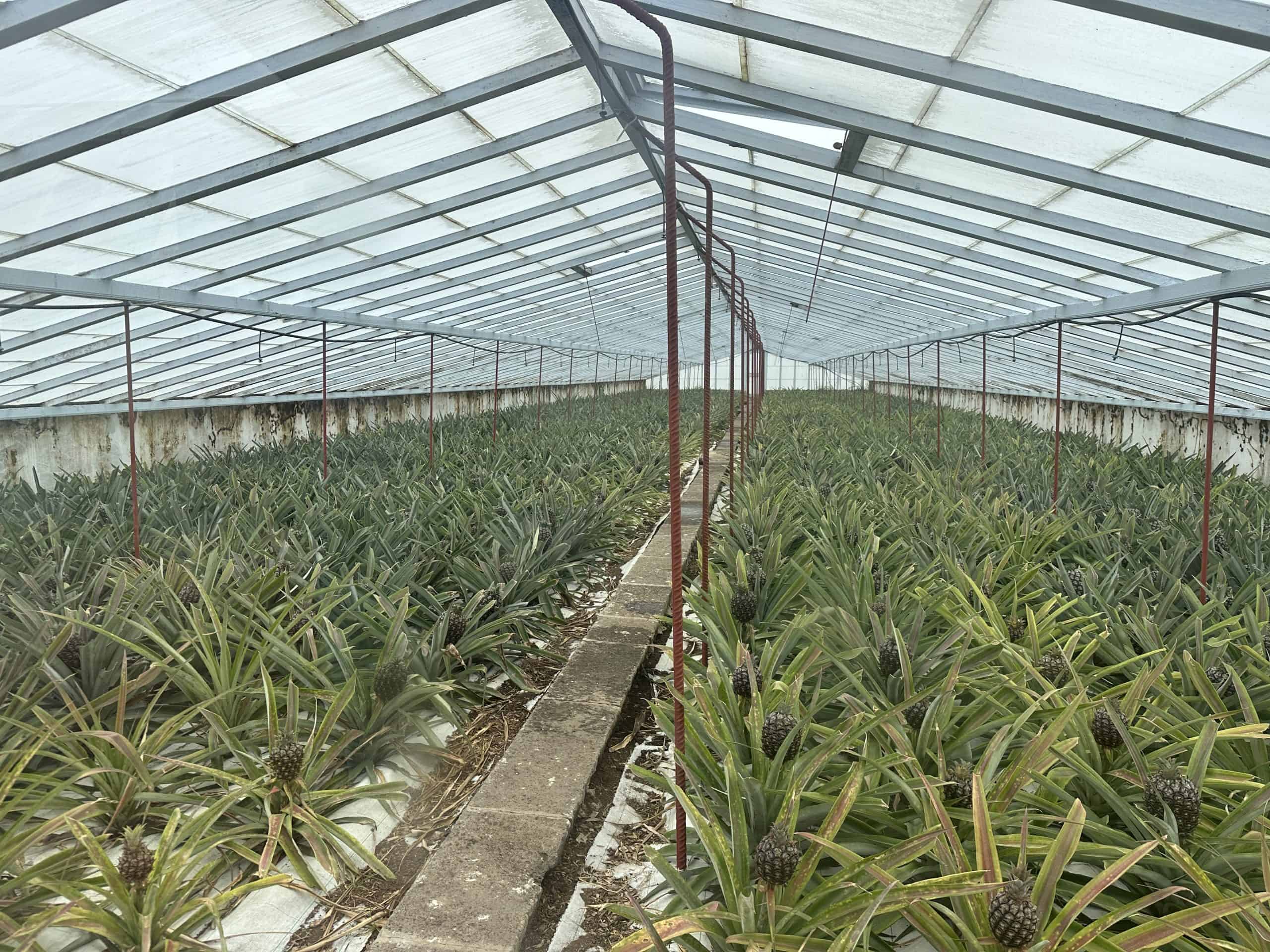
The plantation is open to visitors and describes the process that is used for planting pineapples and how they use smoke to force the blooming process. There is an exhibit tent set up where you can see the progression of the plants and how they mature over the two year process.

They even open up some of the greenhouses for you to see the plants in various stages of growth.
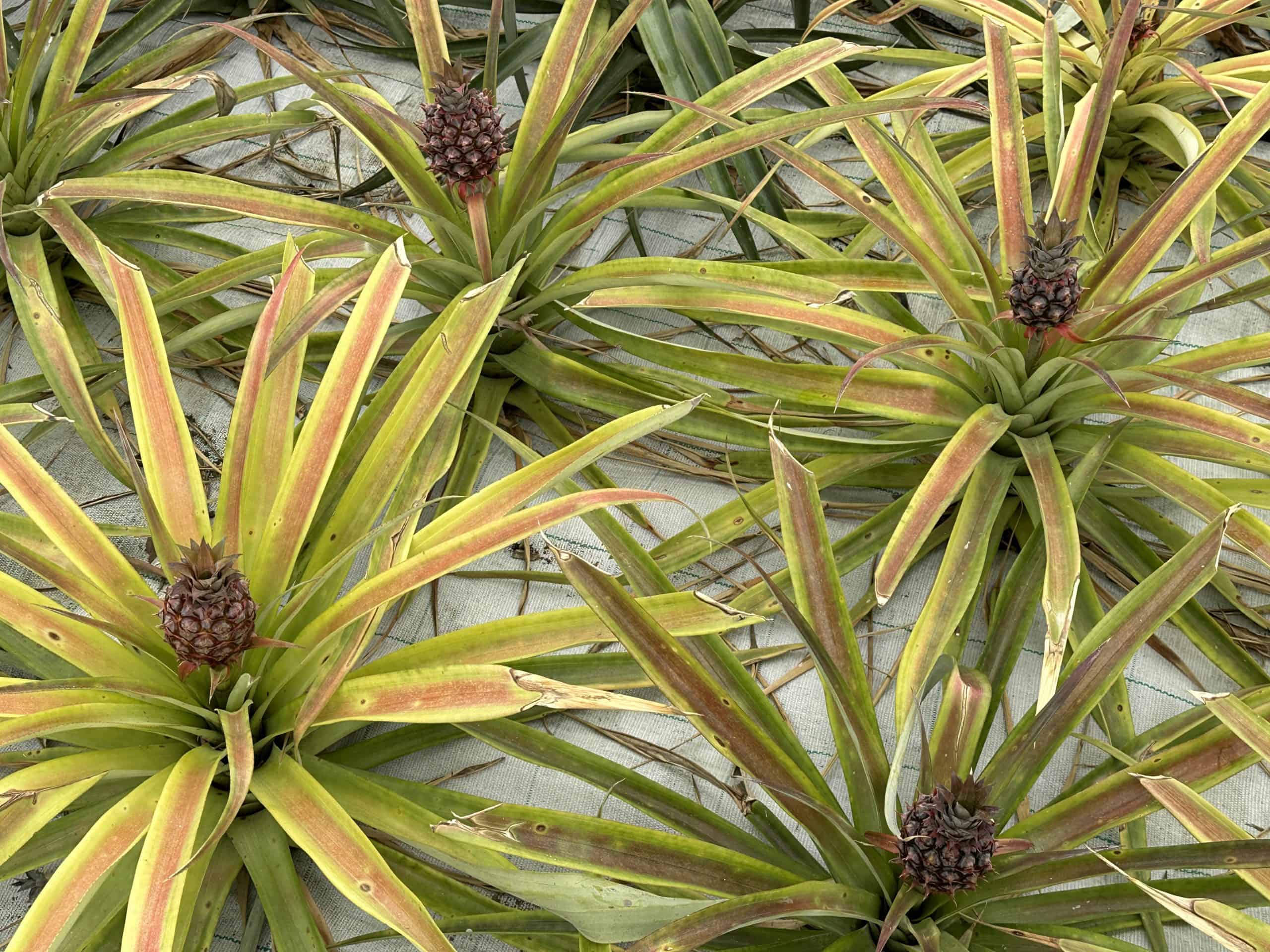

After you tour the grounds, you can stop in to taste a variety of products made with the local pineapples – everything from fresh pineapple juice, tarts, and flambe to smoothies, cocktails and beer! Everything is super fresh and we thought this was a wonderful end to the visit.
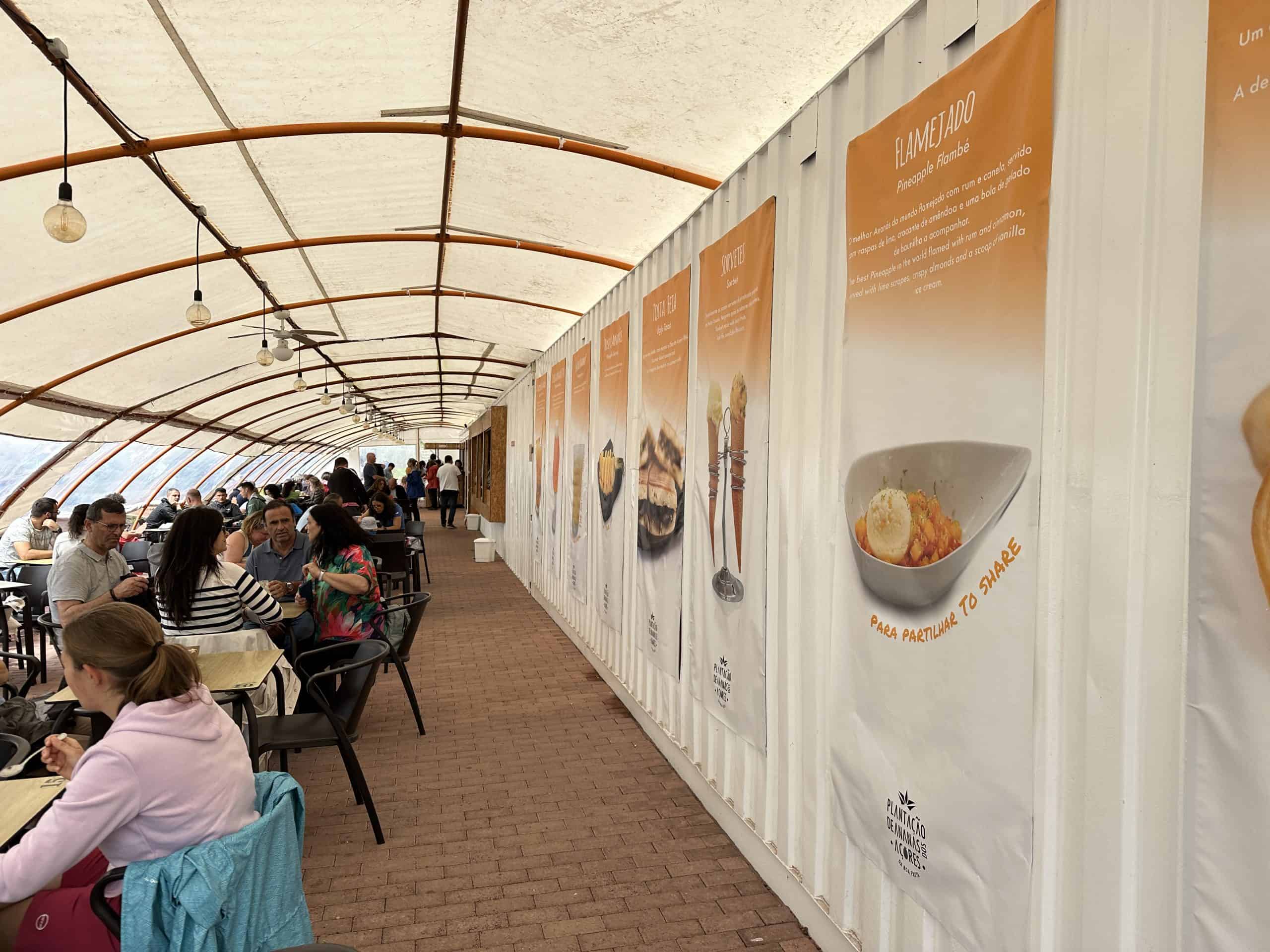

This is one of the best things to do while on the island and this location is ideally located close to the city.
Gruta do Carvao
Located just a 25 minute walk from Ponta Delgada are fascinating underground caves. Reaching for more than 5 kms, they were formed 10,000 years ago when a large river of lava came through and formed a tube shape after cooling.

Inside you can see the different types of basalt lava that have hardened. Some with much higher temperatures have made very hard, dense pieces with no bubbles and others are softer due to the higher gas content.

This area has been designated a natural monument and is an important research location. Inside scientists have found 800 endemic species of bacteria that are being tested in labs in the UK to create antibiotics.
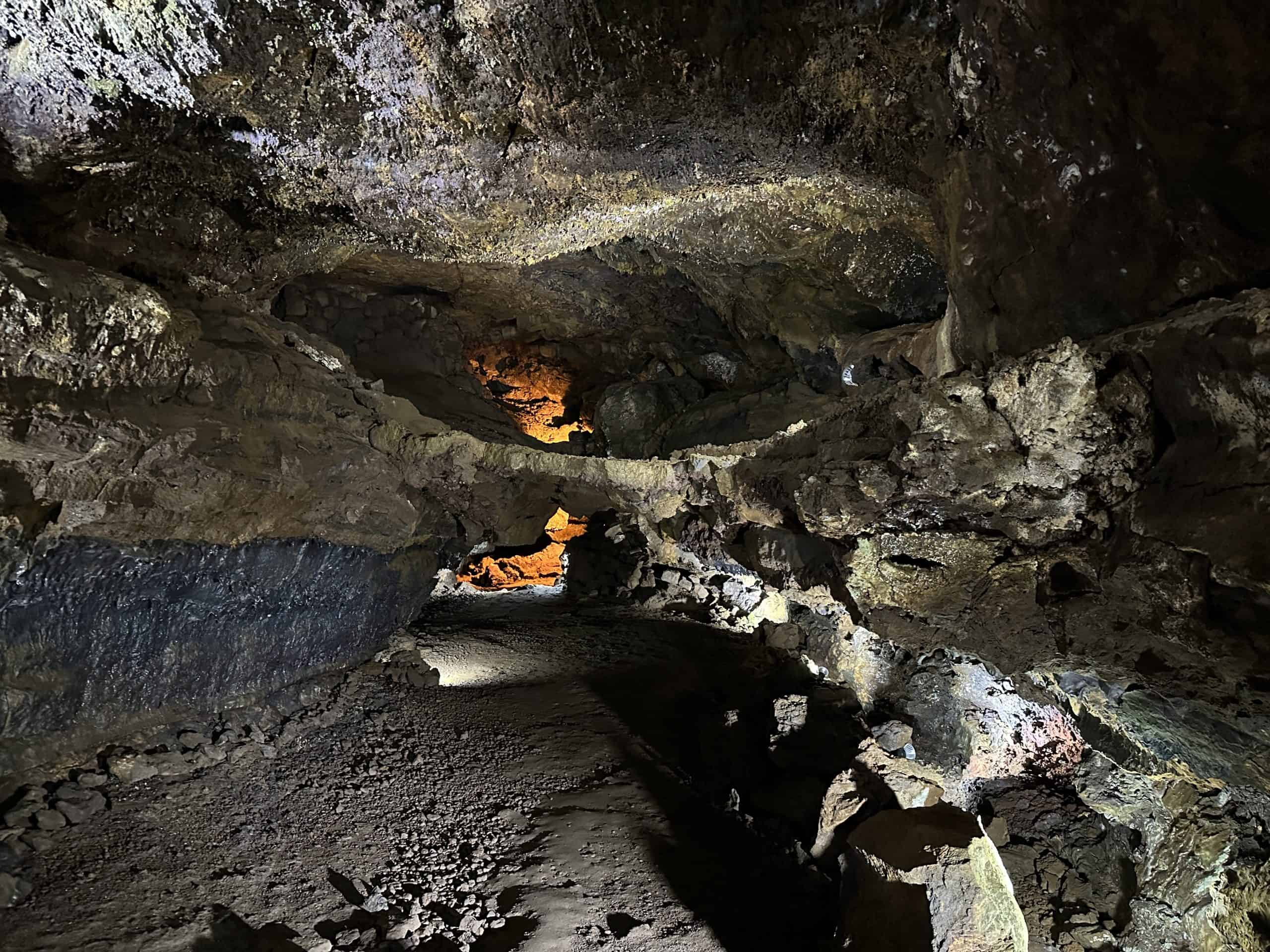
At this time there are 27 caves on Sao Miguel Island and originally many of them were used to store and preserve food. Locals also used them to dispose of garbage but today there is a big effort to clean and preserve these incredible areas.
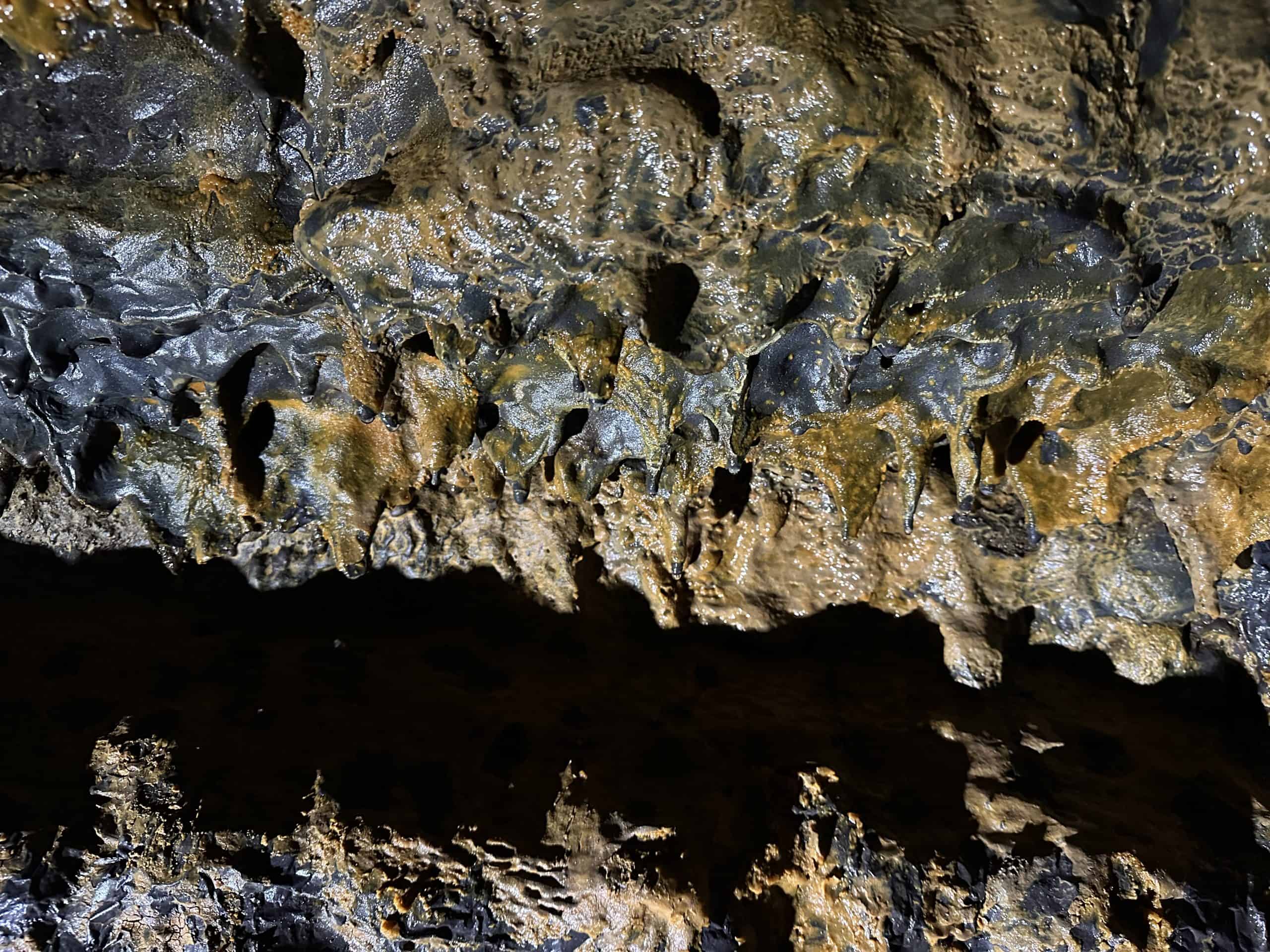
Tours are offered several times per day. Visitors wear hard hats and with a guide explore a small section (approximately 200m) of one of the caves.

We found this to be fascinating. We have seen lava tubes in Hawaii and the Galapagos so we understand the science but we haven’t seen locations that stretch this far before. It was also amazing to see the yellow and orange colours that indicate iron oxide is present in the basalt rather than just solid black surfaces.

We were able to hold a piece of the lava rock and feel just how heavy and dense it was.

Our guide was great at explaining this phenomenon in layman’s terms and his passion for the science was evident as he showed us around. This is one of the amazing things to do in Ponta Delgada and we highly recommend adding this to your itinerary.
Keep in mind pre-booking is necessary.
Insider Tip
Visitors must be able to walk down several flights of stairs and over very uneven surfaces when inside the cave.
Islet of Vila Franca Do Campo
Another location just slightly outside of the city is the island of Vila Franca also known as the Prince’s Ring due to its perfectly round shape. This is a natural reserve made from a volcanic crater.
On one side there is a small channel that is open where boats can enter the beautiful natural lake inside. At low tide, there is a sand bar which makes it a perfect place for swimming and snorkeling.

Between May and October, boats take people across to the island for day trips.
We didn’t have a chance to do this but we did see the island from the mainland. It will definitely be one of the first things to do when we come back.
✅ To combine two activities – Villa Franca and whale watching we suggest this highly rated tour for a full day of enjoyment with lunch.
FAQs
Is Ponta Delgada Safe?
Sao Miguel is an island that is very community focussed and has deep religious roots. The people here are passive, relaxed and welcoming and this type of smaller town behaviour has created a very safe environment. There is no crime and even no weapons on the island. We would consider it one of the safest places we have ever been.
What Island Is Ponta Delgada On?
Ponta Delgada is located on Sao Miguel island in the Azores.
Is Ponta Delgada Worth Visiting For A Day?
Ponta Delgada is a wonderful spot to visit for at least a day. With its beautiful churches, open squares, a bustling market and an interesting military museum housed in a fort, there is plenty to see and do for a day.
Is Ponta Delgada Walkable?
The city of Ponta Delgada is not very large and is easily walkable. Everything we mentioned in this blog with the exception of Villa Franca can be reached by walking there.
What Is Ponta Delgada Known For?
This seaside city is known for its beautiful architecture, patterned stone walkways, elaborate church interiors, public pools and of course whale watching.
Is Ponta Delgada Expensive?
We found accommodations, food and drinks to be very reasonably priced during our visit. Entrance fees were also quite low and in some cases the sights were free to enjoy.
Where To Stay In Ponta Delgada
We stayed at the Hotel Gaivota. This is an excellent location right on the main strip and many rooms have sea views. The hotel was clean and comfortable and the breakfast was great. We found the staff at this location to be super helpful – providing assistance with sightseeing information and reservations.


We also visited the Grand Hotel Acores Atlântico. This is a much larger property also on the main strip. There are more services onsite including a restaurant, lounge, indoor pool and valet parking.

Where To Eat In Ponta Delgada
We enjoyed some wonderful meals in Ponta Delgada.
A Tasca provided fresh local dishes in a casual environment. The food was tasty and served quickly. Our server was really friendly and gave good suggestions. We saw many locals eating here as well so you know it must be good.
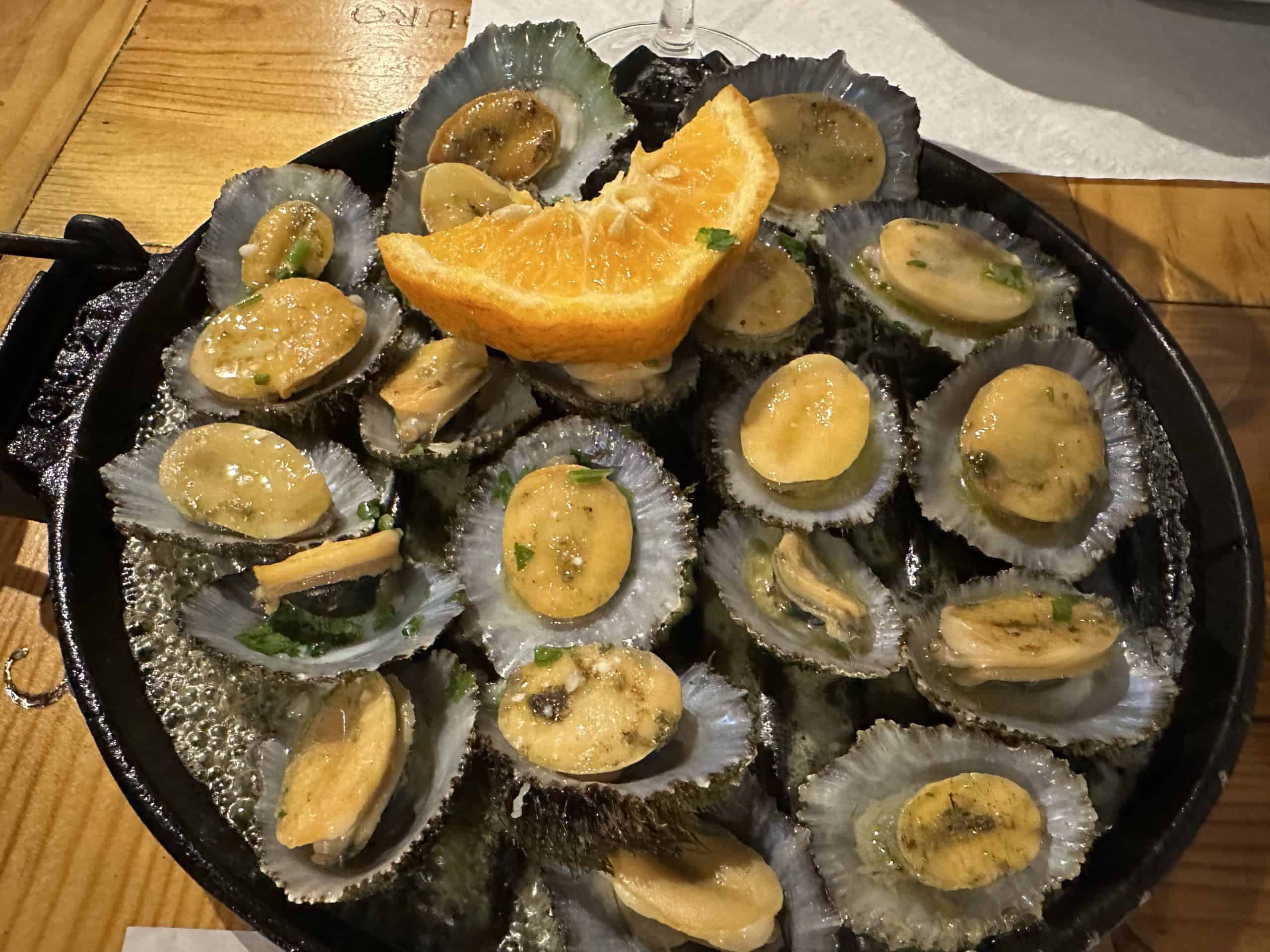
Michel Restaurant is listed as one of the best locations in Ponta Delgada and we understand why. The location and service are a level up from other establishments in the area. The large portions of local dishes including lamb and seafood puff pastry were expertly made and beautifully presented. But be sure to plan in advance as reservations fill up early.

For the best homemade pizza in the city be sure to check out Lan’s Pizzeria. Made fresh and served hot, it was an excellent option with tasty tomato garlic bread, green salad and good local wine it was a nice change of pace.

Final Word…Is Ponta Delgada Worth Visiting?
After spending a week in this capital city, we would say yes when asked is Ponta Delgada worth visiting? There is a lot to see in the city and it is a great location to use as a base to enjoy the island.
The people were friendly, there were many hotels, restaurants and shops and we felt there were some good sights to explore on days when we wanted a slower pace.
Be sure to include some time in this lovely city when you visit the Azores.
